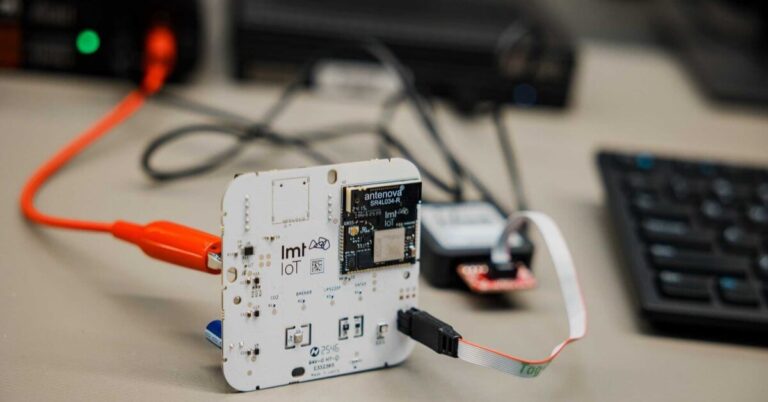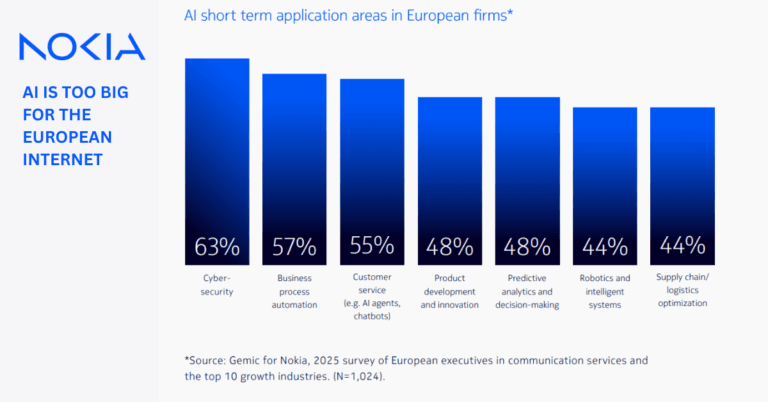LG Uplus and AWS automate cloud-native network deployment with agentic AI
LG Uplus is working with AWS on agentic AI that automates installation of cloud‑native network software, with early claims of up to 80% faster turn‑ups versus manual methods.
Overview of the LG Uplus–AWS agentic AI initiative
LG Uplus and AWS partnered to develop an AI-driven approach that installs complex network software stacks without human intervention. The system uses Amazon Bedrock alongside AWS’s Strands-Agents SDK to orchestrate multiple cooperating AI agents. These agents are pre-trained on network design and implementation documents so they can execute the full workflow—provisioning cloud infrastructure, collecting device and network parameters, generating configurations, performing installation, and troubleshooting. According to the companies, the approach shortens development and iterative testing cycles and reduces human error by replacing many specialist tasks involved in standing up VNFs/CNFs and related services.
How the agentic AI deployment pipeline works
Agentic AI goes beyond Q&A to plan, take actions, and self-correct. In this context, multi-agent workflows break down deployment into tightly scoped tasks—build the cloud substrate, validate topology, render configs, apply policies, and verify health checks—coordinated through a central planner. Design documents and runbooks act as the system of record to ground the agents’ reasoning. In typical telco-cloud environments, this kind of approach integrates with infrastructure-as-code and GitOps pipelines, templating (for example Helm or Kustomize), and change-control systems to ensure repeatability and auditability. While LG Uplus has not disclosed the full toolchain, the use of Bedrock and an agents SDK suggests a pattern operators can replicate: combine foundation models with deterministic guards, catalogs of approved actions, and test harnesses to automate Day‑0/Day‑1 tasks safely.
Business impact for 5G and telco cloud now
Operators face rising complexity from 5G Standalone cores, distributed UPFs, MEC sites, and increasingly disaggregated RAN. Skilled telco-cloud engineers are scarce, and manual builds slow time-to-market and invite configuration drift. If agentic AI can reliably compress installation windows by up to 80% as claimed, carriers can accelerate network expansion, reduce change backlogs, and improve first-pass yield. LG Uplus also positions the approach as a way to lower technical barriers for small and midsize vendors and integrators, potentially widening the ecosystem that can support carrier-grade cloud-native deployments.
Strategic implications for telcos and network vendors
The announcement points to a practical path from “automation” to “autonomous” operations across telco cloud stacks.
Operator use cases and deployment benefits
Near-term targets include faster greenfield instantiation of 5G core network functions, on-demand scaling of data plane elements, MEC site turn-ups, and private 5G deployments. Multi-agent orchestration can also standardize golden builds across regions and partners, reducing variability. To harvest value, operators should pair AI-driven execution with strong guardrails: policy-as-code, role-based approvals, immutable artifacts, and preflight simulation. Expect early deployments to keep a human-in-the-loop for high-risk changes before gradually moving to closed-loop autonomy.
Vendor and SME enablement with templates and runbooks
Automation that is grounded in design documents and templates lowers the cost of supporting complex customer environments. ISVs and SMEs can package productized runbooks, validated Helm charts, and test suites that plug into an operator’s agent framework. This narrows the support gap with larger rivals and can shorten certification cycles. Vendors that expose machine-readable service descriptors, intent models, and lifecycle APIs will be easier to onboard into multi-agent workflows.
Standards alignment and ecosystem interoperability
Agentic deployments align with industry moves toward intent-based, zero-touch operations. Frameworks such as ETSI ZSM for closed-loop service management and TM Forum’s Autonomous Networks levels offer reference models for governance, telemetry, and assurance. Alignment with open APIs (for example, MEF LSO and TM Forum Open APIs) can help agents interoperate across OSS/BSS, CI/CD, and assurance systems while preserving compliance and auditability. While not specific to this project, mapping agent actions to these models will be key for scale.
Risks, controls, and compliance for AI-led changes
AI-led configuration and change must meet carrier-grade reliability, security, and regulatory expectations.
Model reliability, safety, and guardrails
Foundation models can hallucinate or overfit to incomplete context, leading to misconfigurations. Mitigate with strict tool-use policies, action whitelists, unit and integration tests before apply, environment scoping (dev/stage/prod), and progressive rollouts with automatic rollback. Keep humans in approval loops for disruptive changes until KPIs show consistent performance.
Data security, privacy, and sovereignty controls
Deployment artifacts embed secrets, topology, and customer data. Enforce least privilege, vault-based secret handling, redaction in prompts, and private networking to model endpoints. For regulated or on-prem sites, plan for VPC-only access, model choice controls, and data residency options. Comprehensive logging and immutable audit trails are mandatory for incident response and compliance audits.
Operational integration with ITSM and observability
Agentic workflows should integrate with existing ITSM, change management, and observability stacks. Tie success criteria to service-level objectives, not just task completion. Close the loop with assurance systems so remediation actions are policy-driven and measurable. Train SRE and NOC teams on triaging AI-generated changes and diagnostics.
What to watch next in autonomous network deployment
Proof of sustained, repeatable outcomes at scale will determine whether this moves from pilot to standard practice.
KPIs and success metrics
Track installation time compression, first-pass success rate, deployment failure rate, mean time to recovery on failed changes, test coverage, and drift incidence. Compare change-induced incident rates before and after agent adoption to validate net reliability gains.
Scope expansion into Day‑2 and RAN
Expect pilots to extend from Day‑0/Day‑1 install into Day‑2 operations: patching and upgrades, drift detection and remediation, compliance reporting, and intent-based scaling. RAN integration, network slicing onboarding, and cross-domain service chaining are logical—though more challenging—next steps.
Ecosystem and partnership signals
Watch for published reference architectures, open-source toolkits, and partner programs that let vendors package agent-ready artifacts. Commercial availability in specific regions, co-sell motions with AWS, and training tracks for integrators will signal maturity.
Recommendations for adopting agentic AI in telco cloud
Telecom leaders should treat agentic AI as a force multiplier for telco-cloud lifecycle management, starting with constrained, high-repetition domains.
Immediate actions for the next 90 days
Stand up a cross-functional automation tiger team spanning network engineering, cloud, security, and operations. Inventory deployment runbooks and identify two or three high-volume, low-blast-radius candidates (for example lab environments or non-critical CNFs) for agent augmentation. Establish governance: policy libraries, change windows, approval gates, and rollback playbooks. Define baseline KPIs and benchmarking methodology.
6–12 month roadmap and integration milestones
Codify golden templates and compliance rules, shift to declarative intent and GitOps, and expand integration with OSS/BSS. Require vendors to supply validated charts/manifests and machine-readable service descriptors. Build a business case that quantifies time-to-market gains, OPEX savings, and quality improvements, and reinvest a portion into observability and assurance.
Key questions to ask vendors
What models and guardrails power the agents, and how are actions constrained and audited? How are secrets and sensitive topology data handled? What is the rollback strategy and failure isolation model? Can the framework run in air-gapped or sovereign environments? How do licensing, support, and SLAs adapt when AI performs changes? Finally, how portable is the approach across multi-cloud and hybrid sites?








































